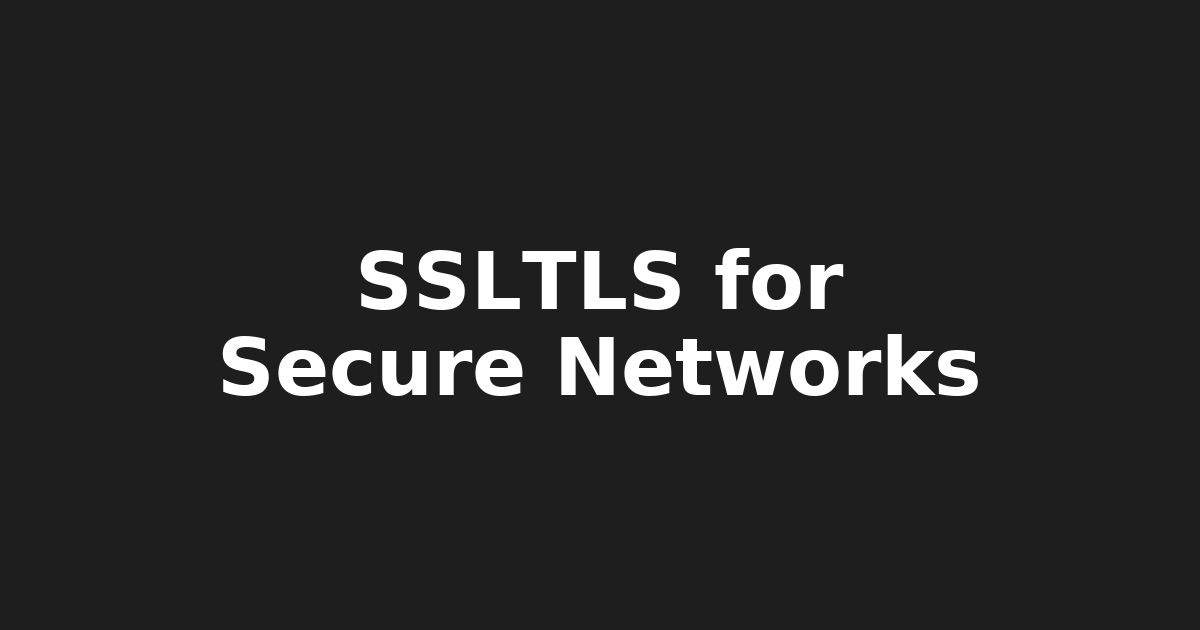Understanding SSLTLS for Secure Network Communications

Secure Sockets Layer/Transport Layer Security (SSL/TLS) for Network Communications: A Comprehensive Guide to Staying Ahead of Threats in 2025
As the world becomes increasingly reliant on network communications, ensuring the security of data transmission has never been more critical. The threat landscape is constantly evolving, with new vulnerabilities and attacks emerging daily. In this article, we'll delve into the latest developments in Secure Sockets Layer/Transport Layer Security (SSL/TLS) protocols, exploring enhanced security features, quantum-resistant cryptography, and OpenPGP/SPKI for secure networking.
Enhanced Security Features: Staying Ahead of Deprecation
In 2023, Google announced its intention to phase out support for deprecated TLS versions (TLS 1.0 and 1.1). This move aims to prevent vulnerabilities that can be exploited by attackers. To ensure the security of your network communications, it's essential to:
- Use the latest supported version of TLS
- Regularly update your software and libraries
For example, Google Chrome has already started enforcing stricter TLS policies in recent versions.
Quantum-Resistant Cryptography: Preparing for a Quantum Attack
Researchers are actively exploring quantum-resistant algorithms like lattice-based cryptography, code-based cryptography, and hash-based signatures to ensure the security of networks against potential quantum attacks. While we're still far from widespread adoption, it's essential to stay informed about these developments.
- Visit the official website of the National Institute of Standards and Technology (NIST) for updates on post-quantum cryptography.
- Explore research papers on quantum-resistant algorithms and their implementation in software libraries.
OpenPGP/SPKI for Secure Networking: Managing Trust and Keys
OpenPGP/SPKI has gained attention as a secure way to manage network keys and ensure trust between systems. This protocol allows you to securely store, manage, and verify public-private key pairs.
- Check out the official documentation for OpenPGP and SPKI on GitHub.
- Learn more about the benefits of using OpenPGP/SPKI for secure networking from experts in the field.
Staying Updated: Resources for Developers
To stay informed about the latest developments in SSL/TLS protocols, consider exploring:
- Latest updates from major web browsers:
- Google Chrome: https://support.google.com/chrome
- Mozilla Firefox: https://support.mozilla.org/en-US/kb/ssl
- Microsoft Edge: https://docs.microsoft.com/en-us/microsoft-edge/devguide/
- Research papers on quantum-resistant cryptography and its implementation in software libraries:
- arXiv: https://arxiv.org/
- ResearchGate: https://www.researchgate.net
- Open-source projects like OpenSSL: https://www.openssl.org/
Key Takeaways
- Secure networking requires regular updates to ensure the latest security standards are being met.
- Developers should be aware of the evolving landscape of secure communication protocols.
- Staying informed about the latest developments and implementing secure coding practices will help protect networks from potential threats.
Example Use Cases
- Implementing SSL/TLS in a Node.js application:
const https = require('https');
const fs = require('fs');
const options = {
key: fs.readFileSync('server.key'),
cert: fs.readFileSync('server.crt')
};
const server = https.createServer(options, (req, res) => {
// Handle requests and responses here
});
server.listen(3000, () => {
console.log('Server listening on port 3000');
});
- Using OpenPGP/SPKI for secure key management:
# Generate a new key pair
gpg --gen-key
# Import the public key from a trusted source
gpg --import <public_key_fingerprint>
# Encrypt a message using the private key
gpg -e -r recipient_fingerprint <message>
By following these guidelines and staying informed about the latest developments in SSL/TLS protocols, developers can ensure the security of their network communications and protect against emerging threats.
Future Trends
As we move forward into 2025, it's essential to stay ahead of the curve when it comes to secure networking. Some trends to watch out for include:
- Quantum-resistant cryptography: Expect increased adoption of quantum-resistant algorithms in software libraries and applications.
- OpenPGP/SPKI: As more organizations adopt OpenPGP/SPKI for secure key management, we can expect to see a decrease in the number of compromised keys and certificates.
By embracing these trends and staying informed about the latest developments in SSL/TLS protocols, developers can ensure the security of their network communications and protect against emerging threats.
